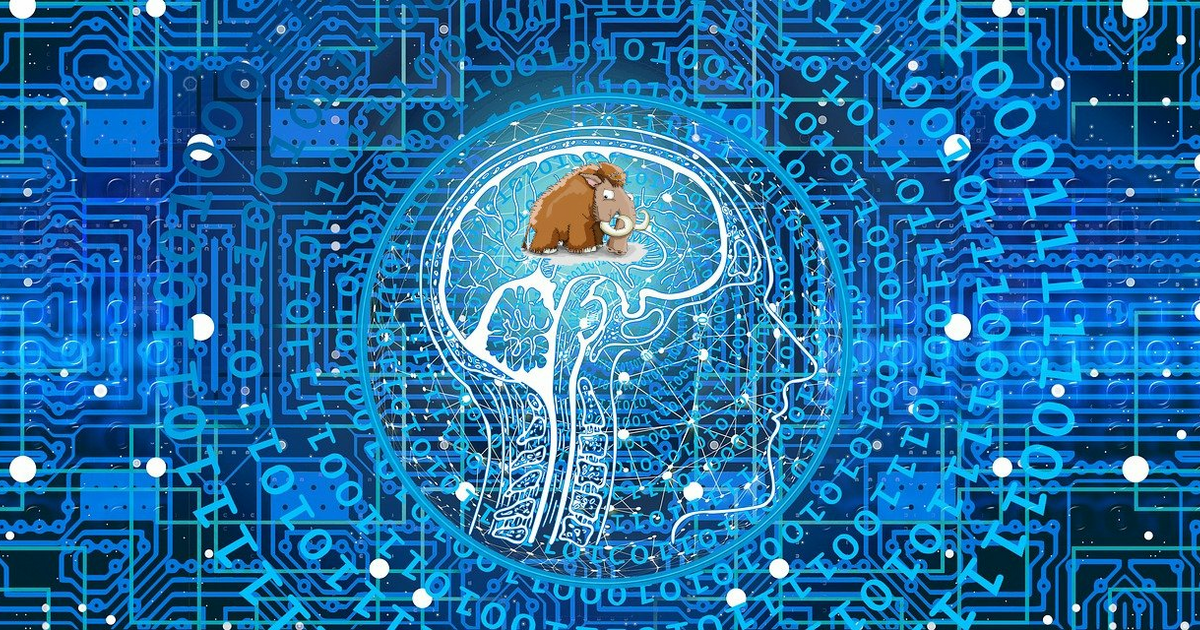Africa: Putting Water Management At the Centre of the Climate Change Fight: [UN News] Some 2.2 billion people worldwide still lack access to safely managed drinking water services, according to the World Health Organization (WHO) - an increasingly urgent challenge as demand for safer access to the vital resource grows. http://newsfeed.facilit8.network/TMhLXj #WaterManagement #ClimateChange #CleanWater #SustainableDevelopment #WHO
#sustainabledevelopment
Africa: Feminist Electrification - the Power Africa Needs: [IPS] Washington DC -- Chad is one of the most extreme examples of energy poverty, with just 10% of the population connected to electricity, a rural electrification rate below 2%, and a global per capita electricity consumption rate that's just 18% of the global average. This hinders its economic development. http://newsfeed.facilit8.network/TMgMW0 #FeministElectrification #EnergyPoverty #CleanEnergy #SustainableDevelopment #EmpowerWomen
Africa: Ethiopia Can Be Model in Unlocking Enormous Housing Assets Across Africa - Habitat for Humanity International CEO: [ENA] Addis Ababa -- Habitat for Humanity International has affirmed Ethiopia's potential to be a model in unlocking its enormous housing assets and opportunities across Africa. http://newsfeed.facilit8.network/TMdbJX #Ethiopia #Housing #Africa #HabitatForHumanity #SustainableDevelopment
Africa: UN Secretary-General Guterres Urges Africa to Play More Active Role in Global Governance: [allAfrica] "Africa must have a greater say in decisions that affect its future," the UN Secretary-General said on Wednesday, August 20, 2025, at a conference in Japan focused on the continent's development. This has always been a point of advocacy for African leaders during major discussions that chart… http://newsfeed.facilit8.network/TMcRrS #Africa #GlobalGovernance #SustainableDevelopment #UN #AntónioGuterres
Africa: Africa Could Become 'Renewable Superpower', Says UN: [Vanguard] Africa has everything it takes to become a "renewable superpower", UN head Antonio Guterres said Thursday, as he called for greater investment in green energy across the resource-rich continent. http://newsfeed.facilit8.network/TMcFBZ #Africa #RenewableEnergy #GreenEnergy #SustainableDevelopment #ClimateChange
Japan’s TICAD 9 summit highlights African leadership, funding, and reforms http://newsfeed.facilit8.network/TMc0d7 #TICAD9 #AfricaLeadership #JapanAfricaRelations #GlobalSummit #SustainableDevelopment
Africa: 'Africa Is Poised for Progress' Guterres Tells Development Conference in Japan: [UN News] The UN Secretary-General on Wednesday repeated his call for Africa to have a greater say in decisions that affect its future, in remarks to a conference in Japan focused on the continent's development. http://newsfeed.facilit8.network/TMbtpX #Africa #Development #UN #Guterres #SustainableDevelopment
EBRD backs expansion of Montenegro wind farm with €26 million loan https://www.byteseu.com/1305396/ #CleanElectricity #CleanEnergyGeneration #Decarbonisation #DiversifiedEnergyFuture #ElektroprivredaCrneGore #EmissionsReduction #EuropeanBankForReconstructionAndDevelopment #GreenEnergyTransition #MontenegrinEnergyTransition #Montenegro #RenewableEnergyProjects #Sustainability #SustainableDevelopment #WindFarm
Africa: Namibia's Green Finance Revolution - A Blueprint for Africa's Energy Future: [New Era] Namibia is quietly emerging as one of Africa's most compelling clean energy stories. http://newsfeed.facilit8.network/TMbC3n #Namibia #CleanEnergy #GreenFinance #SustainableDevelopment #RenewableEnergy
Japan seeks bigger role in Africa at Yokohama summit http://newsfeed.facilit8.network/TMb71c #Japan #Africa #YokohamaSummit #SustainableDevelopment #Trade
Africa: G20 Can Bridge Opposing Power Blocks Through Climate Action: [ISS] Could Africa's first G20 bring like-minded G7 and BRICS+ members together to accelerate climate action? http://newsfeed.facilit8.network/TMb4wz #ClimateAction #G20Africa #SustainableDevelopment #BRICS #G7
Discover 6 hilariously practical ways to grow without losing your sanity. No green smoothies or 5 AM wake ups required – just honest advice for humans who occasionally eat cereal for dinner and consider finding their keys a cardio workout.
#PersonalGrowth, #SustainableDevelopment, #SelfImprovement, #LifeHacks, #MentalHealth, #Productivity, #Mindfulness, #GoalSetting, #Habits
I found a episode of the Win-Win Podcast where Isabelle Boemeke dives into some of her key theses! If you’re curious about her ideas on energy abundance, nuclear power, and sustainable growth, it’s definitely worth a listen. @collectifission @Ardubal @engravecavedave @Tallish_Tom
One of the things that stood out to me was how the conversation between @livboeree.bsky.social and Isabelle Boemeke tackles a fundamental question: Energy is the lifeblood of civilization, but how do we balance abundance with sustainability? Their discussion explores why nuclear power could be a game-changer—covering everything from safety and infrastructure to public perception—and breaks it down into some really thought-provoking angles:
- Why Pit Renewables Against Nuclear?
The episode makes a compelling case for why the ‘either/or’ mindset is holding us back. With innovations like decentralized grids and small modular reactors, the future of energy might be far more collaborative than we’ve imagined.
- Nuclear Power and AI: Surprising Parallels
Did you know nuclear power and AI share striking similarities? Both are transformative technologies that face public skepticism and require responsible stewardship. Isabelle draws fascinating parallels between the two, asking: How can we learn from the past to build a better future?
- Energy Abundance: Beyond Power
Energy abundance isn’t just about keeping the lights on—it’s about lifting people out of poverty, enabling innovation, and creating a sustainable future. Isabelle and Liv explore how we can turn this vision into reality. What’s your biggest hope for the future of energy?
- The Role of Government: Incentives and Innovation
Government policies can make or break the energy transition. Isabelle discusses how smart incentives could fast-track nuclear innovation and asks: What changes would you like to see to make this happen?
If you’re as intrigued as I am, you can watch the full discussion here: How To Unlock Energy Abundance | Isabelle Boemeke https://youtu.be/T_6-_U8yAn8
#WinWinPodcast #NuclearEnergy #RadFuture #EnergyRevolution #NuclearForClimate #SustainableLiving #GreenTech #ClimateHope #EnergyTransition #CleanTech #ClimateSolutions #SustainableDevelopment #Innovation #PolicyChange #Infrastructure #FutureOfWork #EnergyAbundance #NuclearIsGreen #Ecomodernism #ProNuclear #ClimateAction #EnergyForAll #NuclearInnovation #PublicPerception
Tagging a few folks and communities who might be interested: @winwinpodcast@instagram.com @isodope@x.com @AmericanNuclearSociety @SuppOfNucEnergy @nuclear @nuclearmonster @nuclearhumanities @energy @voixdunucleaire
𝗖𝗼-𝗱𝗲𝘀𝗶𝗴𝗻𝗶𝗻𝗴 𝗽𝗮𝘁𝗵𝘄𝗮𝘆𝘀 𝗳𝗼𝗿 𝘁𝗿𝗮𝗻𝘀𝗳𝗼𝗿𝗺𝗮𝘁𝗶𝘃𝗲 𝗰𝗵𝗮𝗻𝗴𝗲
Achieving human well-being and eradicating poverty for all people on earth – while protecting our planet’s climate and biodiversity – will require transformative change.You can be a part of it! Join us at the 2026 Online International #WinterSchool on #SustainableDevelopment for Bachelor’s and Master’s Students and deepen your understanding of these issues.
26-30 January 2026
Apply now (until 15 Oct. 2025)
https://t.ly/6ebzA
Africa: Africa's Moment - From Addis to the World, Food Systems Must Change Now: [IPS] Rome -- Dr. Stefanos Fotiou is Director, UN Food Systems Coordination Hub http://newsfeed.facilit8.network/TMYmLc #Africa #FoodSystems #SustainableDevelopment #UN #ClimateChange
MENA Smart Cities and Urban Planning
Author(s): Scott Douglas Jacobsen
Publication (Outlet/Website): The Good Men Project
Publication Date (yyyy/mm/dd): 2025/04/21
Felipe Renom, an AI engineer and chatbot specialist, focuses on AI applications in smart cities, particularly in Uruguay and South America. He emphasizes AI-driven urban planning, governance, and sustainability, advocating for a balanced approach between automation and human oversight. Renom highlights AI’s role in traffic management, predictive analytics, and economic growth while stressing the importance of high-quality data. He discusses the challenges of AI integration, the evolving role of AI in governance, and future advancements in smart cities. Comparing Uruguay and the Middle East, he underscores differences in technological adoption and infrastructure development. AI, he concludes, will drive urban progress.
Scott Douglas Jacobsen: Okay, we are here with Felipe today. Felipe Renom is an AI engineer and chatbot specialist with expertise in smart city intelligence applications. He explores AI-driven urban planning, governance, and sustainability innovations, particularly in Uruguay and South America. His expertise spans traffic management, energy optimization, and predictive analytics, ensuring cities become more livable, efficient, and human-centric. Felipe advocates for a balanced approach to automation, integrating AI while maintaining human oversight to build trust and inclusivity. He believes AI adaptability is key to meeting the evolving demands of urban landscapes and driving the future of sustainable cities. So, the first question is: How is AI being implemented in various smart city projects? What is the range of AI integration into urban infrastructure?
Felipe Renom: It depends on each city’s infrastructure, but we start with the foundational aspects. The most basic applications include digitalization processes, such as obtaining a passport without visiting an agency or making a phone call. From there, we innovate extensively in traffic management and computer vision, such as analyzing congestion levels on specific roads to optimize traffic flow and prevent overcrowding.
We also focus on internal clients. I work with many public sector organizations that implement AI solutions internally before rolling them out to the general public. They develop infrastructure and systems that allow employees to work more efficiently, ultimately improving the quality and effectiveness of public services.
Jacobsen: Sustainability is now a major topic. People are increasingly concerned about anthropogenic climate change and human-induced environmental shifts. How is AI helping enhance the sustainability of urban environments? Urban areas are typically associated with higher pollution levels.
Renom: Computer vision is a technology that analyzes videos and images. With this, you can identify, for example, how many cars there are in a live camera feed or drone footage. This analysis helps reduce congestion by providing real-time data that can be used to optimize traffic flow and urban planning. It all comes down to data. Sustainability is also a crucial aspect, and governments in South America are investing significantly in these areas.
Jacobsen: What about traffic management systems to reduce congestion and improve mobility?
Renom: Yes, AI is heavily utilized for traffic management. Computer vision plays a significant role, but other systems are also integrated into the process. The key component, however, is data. You need high-quality, structured data to make these systems effective. Governments must invest heavily in collecting and maintaining reliable datasets before implementing smart city developments. Without accurate data, even the most advanced AI models will be ineffective. That is the foundation on which all intelligent urban solutions should be built.
Jacobsen: What about the improvement of governance structures via artificial intelligence? And how do you ensure human oversight in AI-assisted decision-making within public services?
Renom: That is a fascinating question—I love this topic because governments must prioritize it. The first step is securing high-quality data so AI engineers like me can work efficiently and produce optimal results. Governments have two options: hire consultancy firms specializing in AI or build internal AI teams within public institutions. Ideally, they should do both—engaging external expertise while also developing in-house capabilities.
Data engineers play a critical role in this ecosystem. They are responsible for gathering, structuring, and maintaining datasets that power AI models. My work depends on the quality of the data they provide. AI models, including large language models (LLMs) and AI chatbots, do not function autonomously—they require structured input and careful prompting to generate meaningful results. I see AI as a co-pilot rather than an independent decision-maker. The key is understanding how to properly prompt these models, whether running on cloud-based infrastructure or on-premise government systems. AI should be a tool that enhances governance rather than replacing human decision-making.
Jacobsen: Now, urban infrastructure is important. The integration of AI into urban infrastructure comes with challenges despite its promises. What are the primary challenges of AI integration into urban centers? And on the positive side, what are the economic benefits for smart cities when AI-driven solutions are successfully implemented?
Renom: All right. We talk about systems, we talk about AI, we talk about AI engineers, but now we need to talk about citizens and people. People also need to be prepared to adopt artificial intelligence in smart cities. Some older individuals in society naturally show more resistance to AI and prefer traditional, old-school solutions. However, younger generations—like myself, as I am 26—tend to embrace AI much more because it is faster and eliminates unnecessary steps. For example, instead of visiting an agency in person to book an appointment for a passport, AI allows users to complete the process seamlessly online. That is why I believe people are a critical part of this equation.
Regarding economic growth, AI is playing a crucial role in shaping the global economy. If you look at the stock market, technology and AI-driven companies have experienced tremendous growth in the past couple of years. A prime example is NVIDIA, which has seen a massive surge in stock value. NVIDIA is the leading provider of GPUs for AI companies, making it a symbol of AI innovation in the stock market. Their growth reflects the increasing investment and confidence in AI technology. By analyzing market trends, we can see where we are now and predict where we are heading in the coming years. From an economic perspective, AI is a major growth driver, not only because it is a hot topic globally but because financial markets are already showing evidence of its long-term impact.
Additionally, electronic payments are another technological advancement that contributes to economic growth. While not strictly AI, digital transactions have revolutionized how people conduct business, reducing the need for physical cash. This shift has been a game-changer. AI will continue to drive economic expansion—not just because it is trending but because global financial data indicates that AI is directly linked to economic progress.
Jacobsen: What about human decision-making as an oversight in AI integration and the maintenance of a human- or people-focused smart city rather than one overly reliant on surveillance, automation, and similar technologies?
Renom: What exactly do you mean by a people-focused smart city?
Jacobsen: One where the city is designed to cater more to the needs of the citizens rather than overemphasizing surveillance or minimizing human intervention at key points through automation.
Renom: All right. I think it isn’t easy to develop truly people-focused artificial intelligence systems, such as chatbots, because of the current state of AI technology. Right now, it is challenging to deploy AI solutions directly to end users because chatbots still have the potential to generate inappropriate or incorrect responses. This risk requires a high level of caution.
AI should first be deployed for internal users, such as government employees or public agency staff, rather than the general public. There is a significant risk when AI interacts directly with end users because people often try to manipulate AI systems, and AI frequently falls for these tricks.
A well-known example of why such precautions are necessary is Chevrolet’s chatbot incident. Chevrolet launched a chatbot, and someone tricked it into agreeing to sell a car for $1. The company had no choice but to honour the sale, resulting in significant losses. This case illustrates why businesses, governments, and other institutions must be extremely careful when deploying AI systems to the public. If AI is not properly safeguarded, the consequences can be severe.
Jacobsen: For those who may not be familiar with predictive analytics, what is it? How does it apply to urban development, and how does it help city planners make data-driven decisions?
Renom: All right. First, let me explain predictive analytics. It is a branch of AI that includes machine learning, which analyzes historical data to forecast future trends. Machine learning learns from past patterns and adjusts to minimize prediction errors. That is why training an AI model teaches it to recognize mistakes and improve over time.
A simple example is ChatGPT. When you input a question or prompt, ChatGPT predicts the next word in a sequence based on the context of previous words. It keeps generating words one after another based on probability, which is a fundamental example of predictive analytics in action.
Predictive analytics is widely used in finance in practical applications. For example, Yahoo Finance provides historical data on stock prices, and AI models can analyze that data to predict future stock trends. However, this concept applies to countless industries.
In the public sector and smart city development, predictive analytics can forecast energy consumption, estimate municipal budgets, or anticipate infrastructure needs. However, one issue I see is that governments are investing heavily in AI but sometimes overlook the importance of machine learning, which plays a crucial role in data-driven decision-making. Machine learning offers different types of solutions that AI alone does not provide, and it should not be skipped in the development of smart city initiatives.
Jacobsen: If you compare the Middle East and North Africa (MENA) region with Uruguay, what are some common challenges in building smart cities? What might be some unique challenges in each context? What are the similarities and differences?
Renom: All right. I visited the Middle East in 2022, and I noticed incredible growth. I was in Doha, Qatar, and they are far more advanced than we are here. One of the major challenges they face is traffic management, along with military-related technologies. Many military advancements can be implemented and optimized using AI and machine learning.
If I compare Uruguay to Uruguay, we have significant work to do when it comes to smart city development. One of the biggest challenges here is traffic—both car traffic and public transportation. Road congestion increases as more vehicles are sold, but our infrastructure is not keeping pace with this growth. Addressing these issues should be a priority.
Jacobsen: If you were to project forward a decade, how do you see smart cities progressing? I take into account the fact that AI is becoming more sophisticated at a rate beyond exponential. So, 10 years chronologically is not just a regular decade of development. In historical terms, it could be the equivalent of a century of progress compressed into 10 years.
Renom: Yes, we will see much more advanced smart city technologies, but we will not be looking at futuristic cities with flying cars—no way. We will certainly be in a much better position than we are now, but there will still be much work to do.
Cities will be significantly more automated and focused on user experience. Self-service infrastructure will expand, with fewer human interactions and more interactions with AI-driven systems. People will engage with machines and automation much more than they do today. That is the direction we are heading in over the next decade.
Jacobsen: Felipe, thank you very much for your time today. It was a pleasure to meet you, and I appreciate your expertise.
Renom: Thank you.
Last updated May 3, 2025. These terms govern all In Sight Publishing content—past, present, and future—and supersede any prior notices. In Sight Publishing by Scott Douglas Jacobsen is licensed under a Creative Commons BY‑NC‑ND 4.0; © In Sight Publishing by Scott Douglas Jacobsen 2012–Present. All trademarks, performances, databases & branding are owned by their rights holders; no use without permission. Unauthorized copying, modification, framing or public communication is prohibited. External links are not endorsed. Cookies & tracking require consent, and data processing complies with PIPEDA & GDPR; no data from children < 13 (COPPA). Content meets WCAG 2.1 AA under the Accessible Canada Act & is preserved in open archival formats with backups. Excerpts & links require full credit & hyperlink; limited quoting under fair-dealing & fair-use. All content is informational; no liability for errors or omissions: Feedback welcome, and verified errors corrected promptly. For permissions or DMCA notices, email: scott.jacobsen2025@gmail.com. Site use is governed by BC laws; content is “as‑is,” liability limited, users indemnify us; moral, performers’ & database sui generis rights reserved.

Africa: Peacebuilding - the Missing Peace in COP30 Climate Ambition: [IPS] Peacebuilding, conflict prevention, and crime prevention are no longer niche security concerns--they are global imperatives for sustainable climate action. From the migration crisis in Venezuela to the deforestation-driven conflicts in the Amazon, to organised crime in Central America, the ripple… http://newsfeed.facilit8.network/TMXndH #ClimateAction #Peacebuilding #SustainableDevelopment #ConflictPrevention #EnvironmentalJustice
Africa: Africa's Top Climate Change Challenges - a Fairer Deal On Phasing Out Fossil Fuels and Mobilising Funds: [The Conversation Africa] Nearly 600 million people across the African continent still lack access to electricity. Close to one billion rely on traditional biofuels for cooking. Africa is also very vulnerable to climate change, even though it has contributed less than 5%… http://newsfeed.facilit8.network/TMXmdV #ClimateChange #AfricaClimateSummit #RenewableEnergy #FossilFuels #SustainableDevelopment
U.S. Energy Secretary Chris Wright says cuts to wind, solar tax credits came at ‘right time’ | Daily Democrat, Fort Madison, Iowa https://www.byteseu.com/1290509/ #AmesNationalLaboratory #economy #EconomyAndTheEnvironment #Energy #EnergyDevelopment #InflationReductionAct #NaturalEnvironment #SustainableDevelopment #SustainableEnergy #SustainableTechnologies #WindPower
Africa: High Hopes From Investors At AU-AIP Water Summit: [SAnews.gov.za] African Heads of State have expressed strong confidence in investors following positive responses to commitments made on the opening day of the African Union-Africa Water Investment Programme (AU-AIP) Water Summit 2025. http://newsfeed.facilit8.network/TMVqc1 #Africa #WaterInvestment #AUAIP #SustainableDevelopment #InvestInAfrica



